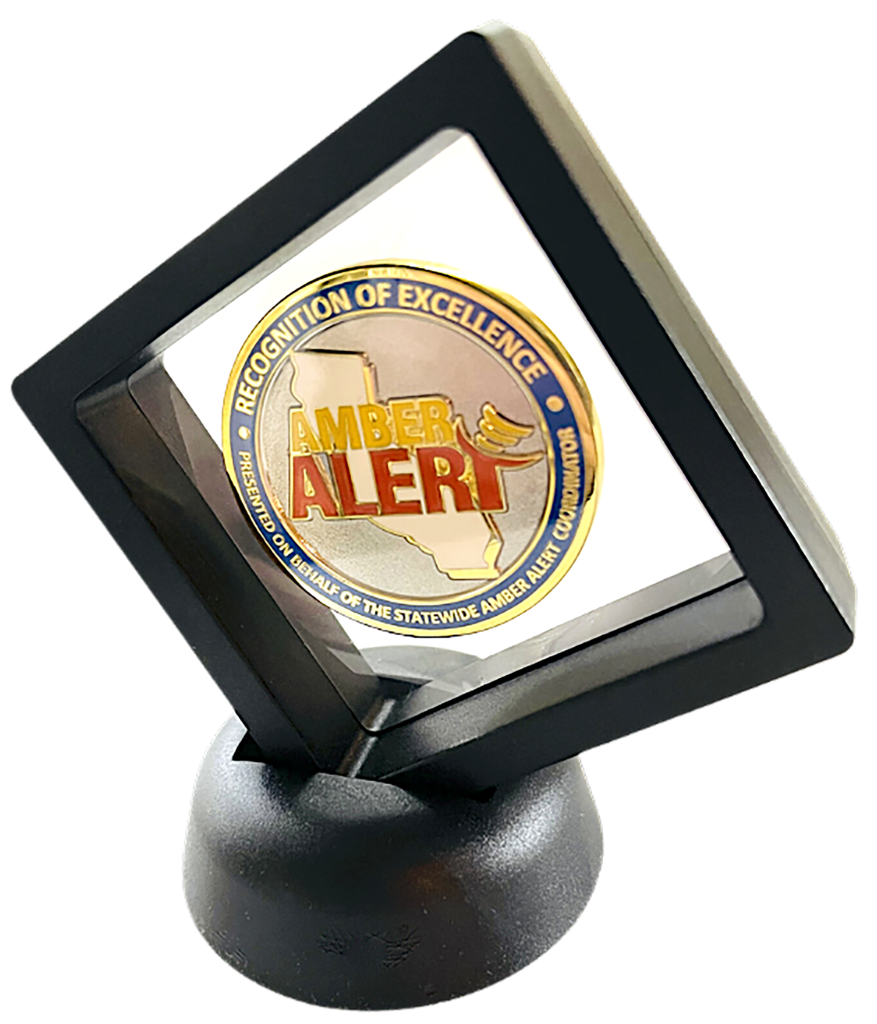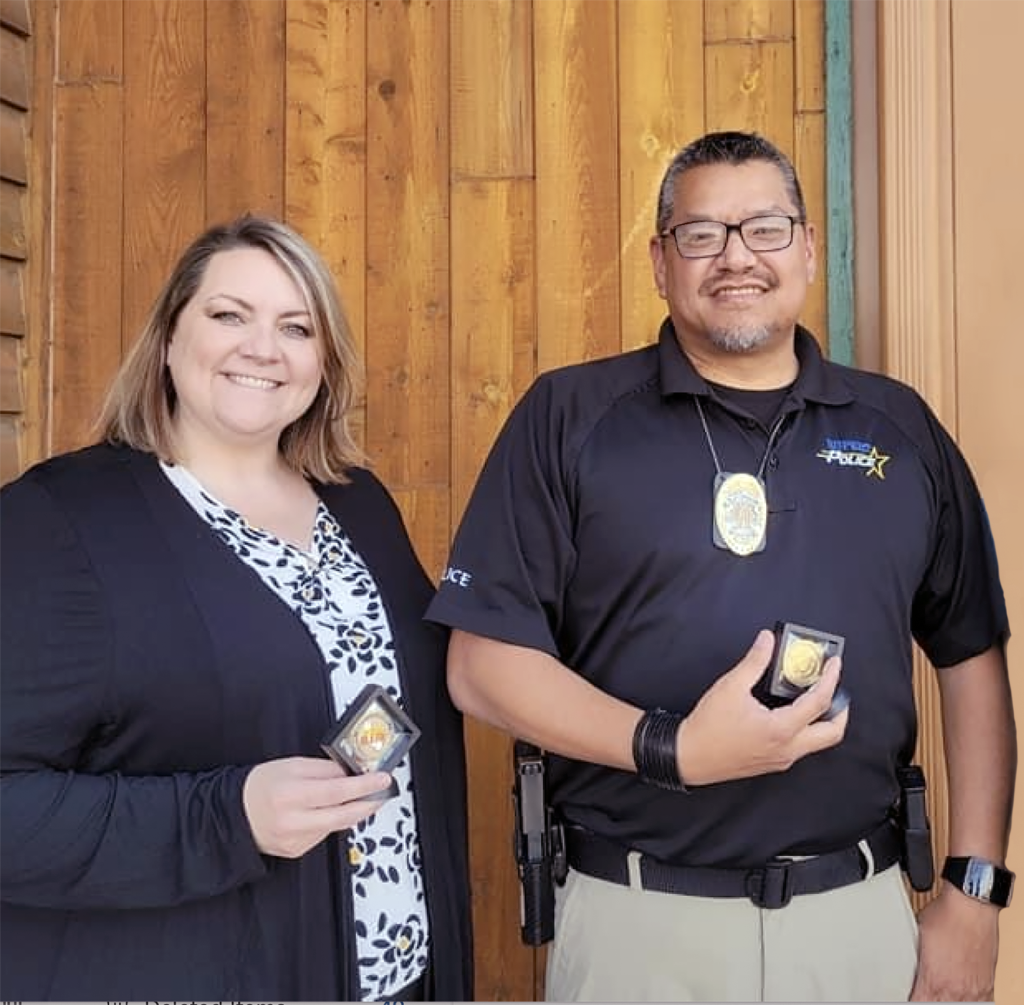
By Jody Garlock

Challenge coins—insignia medallions traditionally awarded to law enforcement and the military—have held special meaning to California Highway Patrol (CHP) Assistant Chief Ken Roberts ever since learning about a World War II pilot who used his medallion to prove his identity after being shot down. After Roberts became a section commander with oversight of the state’s AMBER Alert program about four years ago, he introduced challenge coins as a way to honor law enforcement personnel who proved instrumental in helping solve child abduction cases.
Without the necessary funding to facilitate the project—meant to boost morale in the CHP’s Counterterrorism and Threat Awareness (CTTA) Section in Sacramento—Roberts spent $1,000 of his own money to create AMBER Alert challenge coins that honor officers and allied partners for going above and beyond in their duties to recover abducted children. Commending the AMBER Alert work from among his section’s varied efforts was easy: “It’s one of the most nationally recognized alerts, and it hits the heartstrings,” Roberts says.
CHP Lieutenant Justin Howlett, who has overseen the program in recent times, says the coins are an exclusive honor, not something casually bestowed or shared.
Since the program’s inception, each year only two or three people or agencies have received the “Recognition of Excellence”—typically fewer than half of the cases that required an AMBER Alert activation. “It’s genuine gratitude,” Howlett says of the CHP AMBER Alert program’s highest honor, only bestowed on personnel actively involved in an AMBER Alert case.

In one case that involved a cross-border collaboration, an Idaho teen believed to be a victim of human trafficking was safely recovered in California after an AMBER Alert was initiated in her home state. CHP personnel who helped recover the girl from an interstate rest stop near Truckee, California, were awarded, as were Idaho State Police AMBER Alert Coordinator/Missing Persons Clearinghouse Manager Tanea Parmenter and Rupert (Idaho) Police Department Detective Sam Kuoha.
The shiny gold coins bearing the AMBER Alert logo aren’t merely tokens for display. They can help provide closure in child abduction cases, which are some of the most difficult in law enforcement. They also are a source of pride that extends beyond the office or patrol vehicle.
Howlett and Roberts recount the story of an officer whose teenage son teared up after seeing his dad’s challenge coin—and realizing his dad helped save children. “The officer said that was the best feeling ever—to have his son say how proud he was of him,” Roberts says.
While some organizations informally share their coins, the CHP is selective to ensure that “when we give them, it means something,” Roberts says. Award presentations are low key to avoid seeming like it’s being done for the publicity. “We keep it very internal so it feels personal,” Howlett adds.
Roberts credits his officers’ support for creating the challenge coin recognition. One of them even handled the coin’s design. “They were the catalyst; I was just the means to make it happen,” Roberts says. “It’s not a heavy lift to do something like this, as long as you set a few parameters.”
For Howlett, the program has proven well worth the administrative time. “It’s something that has value to us, and it has value to the people who receive the coins,” he says.
